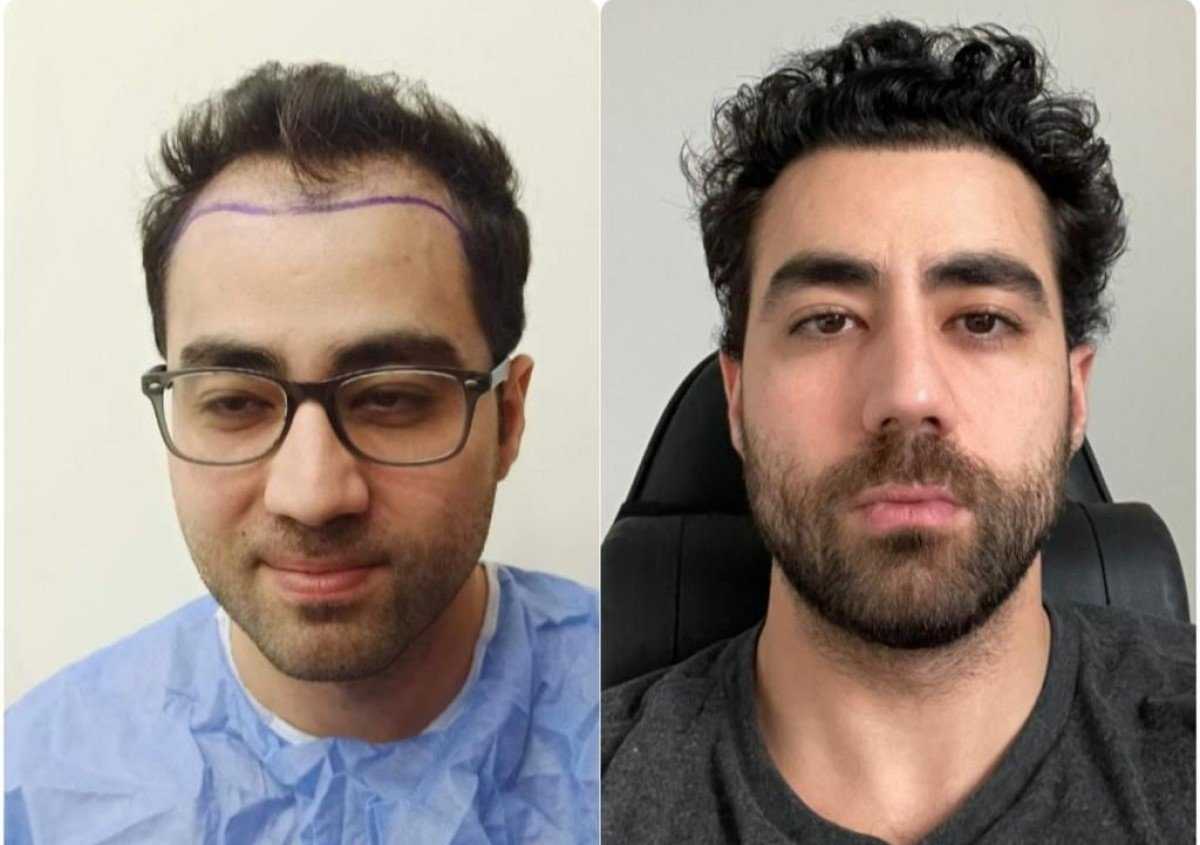
Rediscover Your Grip on Life - The Ultimate Guide to Hand Surgery Abroad
Our hands are our primary tools for interacting with the world. From a simple handshake to a complex task, they are essential to our independence and quality of life. When an injury, chronic condition, or congenital issue affects your hands, it can be debilitating. Hand surgery offers a path to recovery, restoring function, and alleviating pain. It is a highly specialized field that addresses the intricate network of bones, tendons, nerves, and blood vessels in the hand and wrist.
Increasingly, patients are looking beyond their local hospitals for solutions. Medical tourism for hand surgery has emerged as a viable and attractive option for thousands. Why? It combines access to world-renowned specialists and state-of-the-art facilities with significant cost savings. This guide will walk you through everything you need to know about pursuing hand surgery abroad, from understanding the procedures to planning your journey for a smooth and successful recovery.
Why Do People Travel Abroad for Hand Surgery?
The decision to travel for a medical procedure is driven by several compelling factors. For hand surgery, the motivation is often a blend of financial prudence and the pursuit of excellence. In many Western countries, the cost of specialized surgery can be prohibitively high, especially if it's not fully covered by insurance. Medical tourism destinations offer the same, if not better, quality of care for a fraction of the price.
Beyond cost, access to care is a major issue. Wait times for a consultation with a hand specialist, let alone the surgery itself, can stretch for months in some national health systems. Medical tourism allows patients to schedule their procedure promptly, avoiding prolonged periods of pain and disability. Furthermore, many international hospitals are JCI-accredited (Joint Commission International), meaning they adhere to the highest global standards of patient safety and care.
How Much Does Hand Surgery Cost Around the World?
One of the most significant advantages of medical tourism is the potential for cost savings. The price difference is not due to lower quality but reflects the lower cost of living, operational expenses, and labor in other countries. This allows international hospitals to offer world-class services at a more competitive price point.
To illustrate this, let's compare the estimated cost of a common procedure, Carpal Tunnel Release Surgery, across different countries. These prices are estimates and can vary based on the complexity of the case and the specific facility.
| Country | Estimated Cost (USD) |
|---|---|
| United States | $4,000 - $10,000 |
| United Kingdom | $3,500 - $7,000 |
| Mexico | $2,000 - $4,500 |
| Thailand | $1,800 - $4,000 |
| Turkey | $1,500 - $3,500 |
What are the Different Types of Hand Surgery?
The field of hand surgery is vast, with procedures designed to address a wide array of problems. Your surgeon will recommend the best approach based on a thorough diagnosis. Some of the most common types include:
- Tendon Repair: Tendons are the fibers that connect muscle to bone. When they are severed or damaged due to an injury or infection, surgery is required to reattach them and restore movement. This can be a complex procedure, especially when dealing with the fine flexor tendons in the fingers.
- Nerve Repair and Decompression: Conditions like Carpal Tunnel Syndrome occur when a major nerve to the hand is compressed. Surgery involves releasing the ligament pressing on the nerve to relieve pain, numbness, and tingling. Surgeons can also repair nerves that have been cut or crushed.
- Joint Replacement (Arthroplasty): Severe arthritis can destroy the cartilage in the finger joints, causing pain and deformity. Surgeons can replace these damaged joints with small, artificial implants made of silicone or metal, similar to hip or knee replacements, to restore function and reduce pain.
- Fracture and Dislocation Repair: When a bone in the hand or wrist is broken, surgery may be needed to realign the fragments and fix them in place with pins, wires, or plates. This is known as open reduction and internal fixation (ORIF) and ensures the bone heals in the correct position.
Who is a Good Candidate for Hand Surgery?
Hand surgery is typically considered when conservative treatments have failed to provide relief. You might be a good candidate if you suffer from a condition that significantly impacts your daily activities, work, or overall quality of life. The decision to proceed with surgery is made in consultation with a specialist after a comprehensive evaluation, which may include physical exams, X-rays, and nerve conduction studies.
General health is also a factor. Candidates should be in good overall health to minimize surgical risks. It's crucial to have realistic expectations about the outcomes of the surgery. The goal is to improve function and reduce pain, but a complete return to pre-injury status may not always be possible, especially in severe cases. A commitment to post-operative rehabilitation, including physical therapy, is essential for achieving the best possible result.
What Conditions Can Hand Surgery Treat?
Hand surgeons are trained to manage a diverse spectrum of problems affecting the hand, wrist, and forearm. These conditions can be categorized broadly:
- Traumatic Injuries: This includes fractures of the bones, lacerations to tendons and nerves, and crush injuries.
- Degenerative Conditions: Osteoarthritis and rheumatoid arthritis can cause severe joint pain and destruction, which may be managed with joint fusions or replacements.
- Nerve Compression Syndromes: The most common is Carpal Tunnel Syndrome, but other nerves like the ulnar nerve can also become compressed (Cubital Tunnel Syndrome).
- Dupuytren’s Contracture: A condition where the tissue beneath the skin of the palm thickens and tightens, causing fingers to curl inward.
- Congenital Differences: Some individuals are born with conditions like webbed fingers (syndactyly) or extra fingers (polydactyly), which can be corrected with surgery.
How Do I Choose the Best Country for Hand Surgery?
Selecting a destination involves more than just finding the cheapest option. Your priority should be safety and quality. Look for countries with a strong reputation for medical excellence. Research hospitals that are internationally accredited, as this ensures they meet rigorous standards. The surgeon's credentials are paramount. Look for specialists who are board-certified and have extensive experience in the specific type of hand surgery you need.
Consider the logistics of travel. How long is the flight? What are the visa requirements? Is the country politically stable and safe for tourists? Language can also be a factor, so check if the hospital staff and your medical team speak English or your native language. A medical tourism facilitator like PlacidWay can help you navigate these factors and connect you with vetted surgeons and hospitals worldwide.
What is the Recovery Process Like After Hand Surgery Abroad?
Planning for recovery is a critical part of the medical tourism journey. Immediately after surgery, your hand will be bandaged or placed in a splint. You will need to stay in the destination country for a certain period for follow-up appointments and to ensure there are no immediate complications. Your surgeon will advise you on the necessary duration, which could range from one to three weeks.
During this time, your focus will be on managing pain, keeping the surgical site clean, and protecting your hand. Many international hospitals offer rehabilitation services, so you may begin physical therapy before you even fly home. Once you are cleared for travel, your rehabilitation will continue with a local therapist. Clear communication between your surgeon abroad and your physical therapist at home is key to a seamless recovery.
Is it Safe to Get Hand Surgery in Another Country?
The safety of medical tourism hinges on due diligence. The global healthcare landscape is diverse, and standards can vary. However, the leading hospitals catering to international patients often boast technology and expertise that rivals or exceeds that of facilities in developed nations. The key is to vet your options carefully.
Look for concrete indicators of quality:
- Accreditation: Joint Commission International (JCI) accreditation is the gold standard for patient safety and quality of care.
- Surgeon Credentials: Verify the surgeon's education, training, board certifications, and number of procedures performed.
- Patient Reviews: Seek out testimonials and reviews from previous international patients.
- Transparency: Reputable providers will be open about their outcomes, pricing, and procedures.
What are the Potential Risks and Complications of Hand Surgery?
Every surgical procedure carries some level of risk. Your surgeon will discuss these with you in detail before you consent to the operation. Specific risks related to hand surgery include infection, poor wound healing, excessive bleeding, and blood clots. There is also a risk of injury to nearby nerves or blood vessels, which could cause numbness or weakness.
Stiffness is a common issue after hand surgery, which is why post-operative physical therapy is so crucial. In some cases, the initial problem may recur over time. Choosing a highly experienced surgeon and diligently following all post-operative instructions are the best ways to minimize potential complications and ensure a successful outcome.
How Painful is Hand Surgery?
Pain management is a priority for your medical team. Depending on the extent of the surgery, you may receive a regional anesthetic (nerve block) that numbs the entire arm, or general anesthesia. This ensures you feel no pain during the procedure. After the anesthesia wears off, some level of pain and discomfort is normal.
Your doctor will provide a prescription for pain medication to keep you comfortable during the initial recovery period. Keeping your hand elevated above your heart can also help reduce swelling and pain. Most patients find that the pain becomes much more manageable within the first week after surgery.
How Long Does it Take to Regain Full Use of Your Hand?
The timeline for recovery is highly variable. A simple trigger finger release might allow you to return to most activities within a few weeks. In contrast, a complex tendon repair could require months of dedicated physical therapy to restore strength and range of motion. Your surgeon will give you a realistic timeline based on your specific procedure.
The rehabilitation process is as important as the surgery itself. A certified hand therapist will guide you through exercises to prevent stiffness, build strength, and restore fine motor skills. Your active participation and commitment to this therapy are essential for achieving the best possible long-term function.
What Questions Should I Ask My Hand Surgeon Before Traveling?
A virtual consultation is your opportunity to interview the surgeon and ensure you are comfortable with them and their plan. Come prepared with a list of questions. Essential topics to cover include:
- How many of these specific procedures have you performed?
- What are your success and complication rates?
- What is the expected outcome for my specific case?
- What type of anesthesia will be used?
- What is included in the price quote (consultations, surgery, follow-ups)?
- What is the post-operative care plan?
- How long do I need to stay in the country?
- How will we communicate if I have questions after I return home?
Take the Next Step with PlacidWay
Ready to regain your dexterity and live pain-free? Your journey to restored hand function starts here. Explore world-class international clinics, compare affordable prices, and get a free, personalized quote for your hand surgery with PlacidWay. Let us guide you to the best specialists and ensure a seamless, safe medical travel experience. Your hands are worth it!
Orthopedic Surgery Abroad, Knee Sugery Abroad





.png)
.png)
.jpg)
.png)

Share this listing